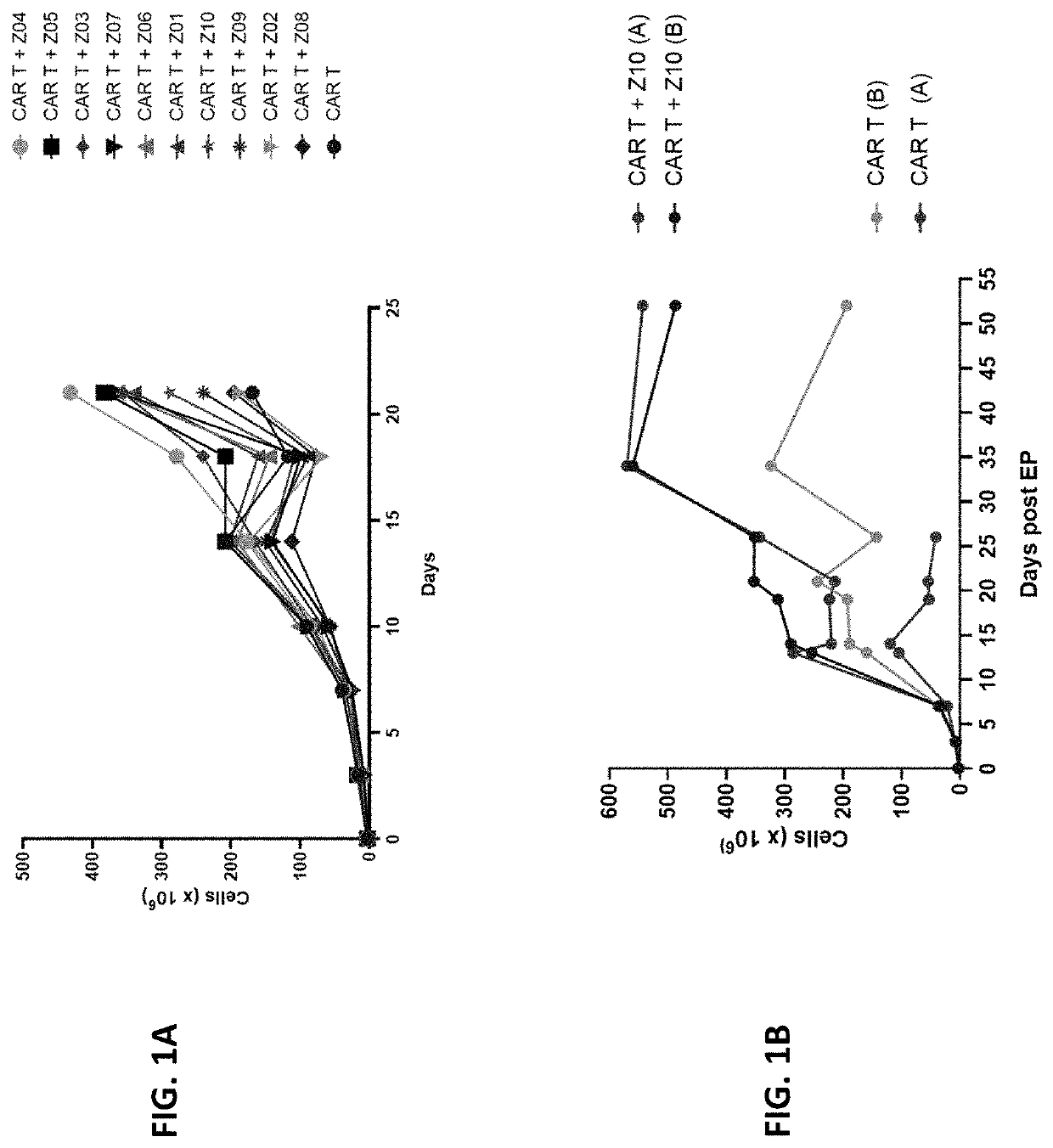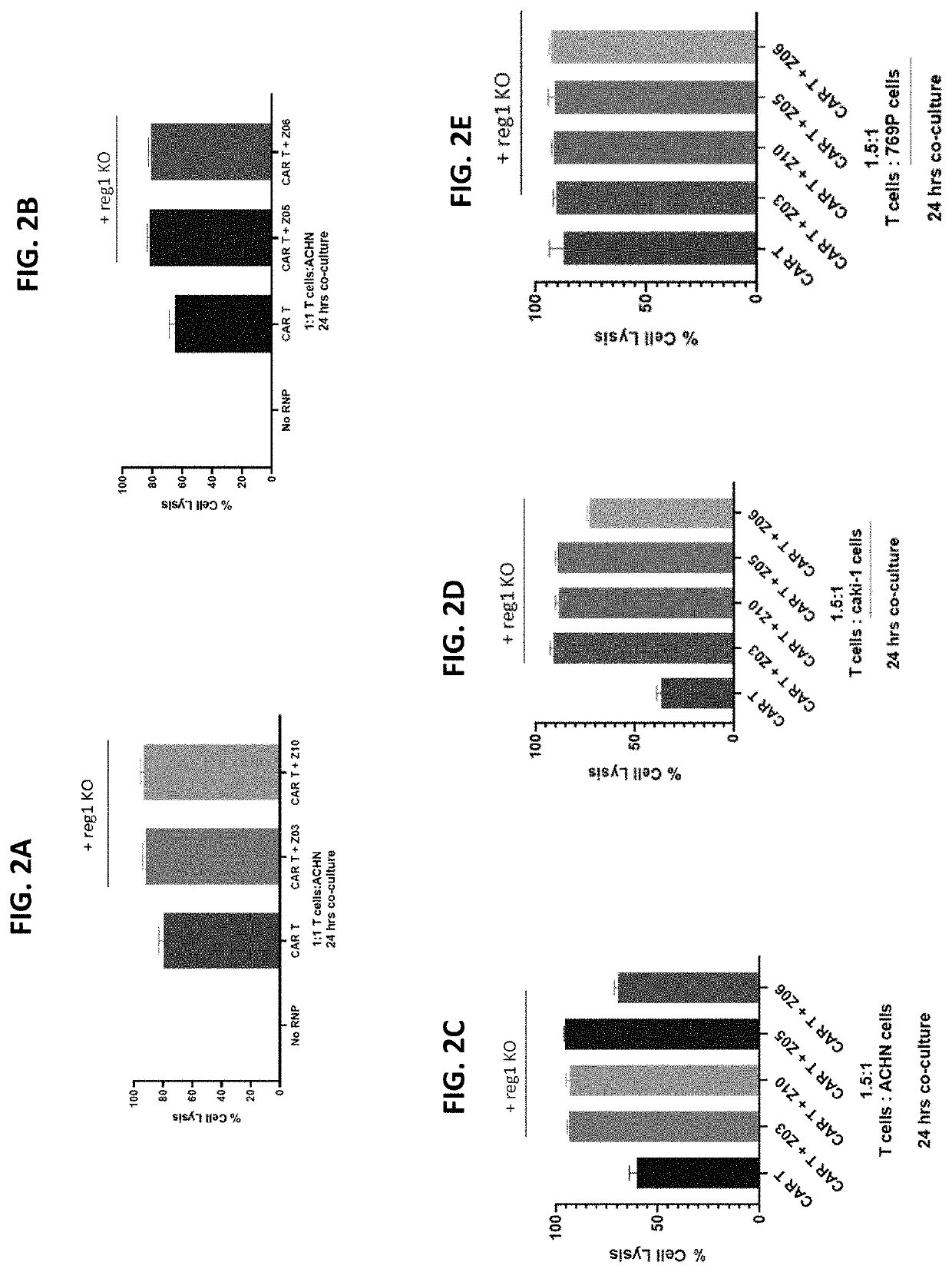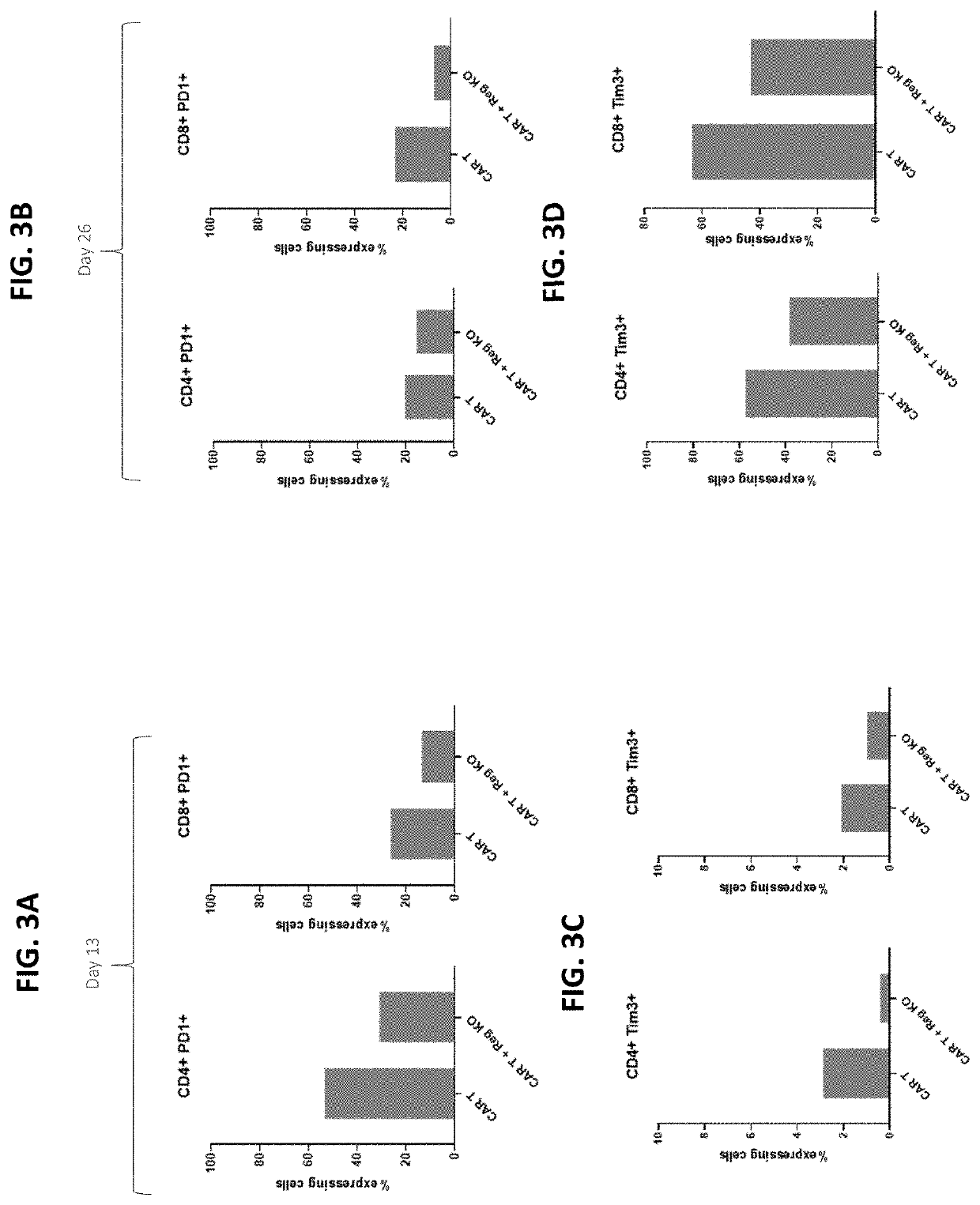Genetically engineered t cells with regnase-1 and/or tgfbrii disruption have improved functionality and persistence
- Summary
- Abstract
- Description
- Claims
- Application Information
AI Technical Summary
Benefits of technology
Problems solved by technology
Method used
Image
Examples
example 1
Screening of Reg1 Targeting Site by CRISPR / Cas-Mediated Gene Editing
[0340](A) Efficient Disruption of Reg1 by Cas9:sgRNA RNPs in T Cells
[0341]The Reg1 gene was efficiently edited in primary human T cells ex vivo using CRISPR / Cas9 gene editing. Genomic segments of the Reg1 gene containing the six (6) protein coding exons were used as input in gRNA design software. Desired gRNAs were those that would lead to insertions or deletions in the coding sequence, disrupting the amino acid sequence of Reg1, leading to out of frame / loss of function allele(s) (referred to as “Reg1 knockout (KO)” alleles or “Reg1 disrupted alleles”). All ten (10) in silico-identified gRNA spacer sequences targeting the Reg1 gene were synthesized, and the gRNAs were specifically modified, as indicated in Table 1. While the gRNAs used in this example were modified with 2′-O-methyl phosphorothioate modifications, unmodified gRNAs, or gRNAs with other modifications, may be used. The target sequences and gRNA sequence...
example 2
Regnase / Disruption Improves CAR-T Cell Expansion
[0353]Using T cells expressing an anti-CD70 CAR disclosed herein as an example, this study demonstrated that knocking out Reg1 in the CAR-T cells resulted in enhanced in vitro CAR-T cell culture expansion.
[0354]Allogeneic human T cells that lack expression of the TRAC gene, β2M gene, CD70 gene, and Regnase-1 gene, and express a chimeric antigen receptor (CAR) targeting CD70 were produced. Briefly, activated human T cells were first isolated and then Cas9:sgRNA RNPs (1 μM Cas9, 5 μM gRNA) were delivered to the activated human T cells by electroporation, followed by incubation with recombinant adeno-associated adenoviral vectors (AAVs), serotype 6 (AAV6) (MOI 50,000). The nucleofection mix contained the Nucleofector™ Solution, 5×106 cells, 1 μM Cas9, and 5 μM gRNA (as described in Hendel et al., Nat Biotechnol. 2015; 33(9):985-989, PMID: 26121415). The RNP complex comprised Cas9 and sgRNA targeting the TRAC, B2M, and CD70 (shown in Table...
example 3
Cell Killing Function of Anti-CD70 CAR T Cells with Reg1 Disruption
[0358]Allogeneic human T cells that lack expression of the TRAC gene, β2M gene and CD70 gene, and express a chimeric antigen receptor (CAR) targeting CD70 were produced. The edited CAR T cells further comprised knock out of Reg1 gene. As in the examples above, activated human T cells we electroporated with Cas9:sgRNA RNPs (1 μM Cas9, 5 μM gRNA), followed by incubation with a recombinant adeno-associated adenoviral vectors, serotype 6 (AAV6) (MOI 50,000).
[0359]Recombinant AAV comprised the nucleotide sequence of SEQ ID NO: 169 (encoding anti-CD70 CAR comprising the amino acid sequence of SEQ ID NO: 138). The following sgRNAs were used: TRAC (SEQ ID NO: 58), β2M (SEQ ID NO: 62), CD70 (SEQ ID NO: 54), and optionally Reg1 (e.g., REG1-Z03, Z05, Z06, and Z10; see Table 22 and FIGS. 2A to 2E).
[0360]At time points of one week and one month post-electroporation, T cells were checked for CAR expression by flow cytometry. Both ...
PUM
 Login to View More
Login to View More Abstract
Description
Claims
Application Information
 Login to View More
Login to View More - R&D
- Intellectual Property
- Life Sciences
- Materials
- Tech Scout
- Unparalleled Data Quality
- Higher Quality Content
- 60% Fewer Hallucinations
Browse by: Latest US Patents, China's latest patents, Technical Efficacy Thesaurus, Application Domain, Technology Topic, Popular Technical Reports.
© 2025 PatSnap. All rights reserved.Legal|Privacy policy|Modern Slavery Act Transparency Statement|Sitemap|About US| Contact US: help@patsnap.com



